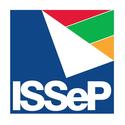In short
Human biomonitoring consists of measuring substances (or their metabolites) in human fluids or tissues (blood, urine, umbilical cord, hair, etc.). It makes it possible to obtain a real and overall estimate of the exposure of people to chemical substances, all sources and routes of exposure combined. As such, biomonitoring is particularly useful for monitoring substances widely distributed in the indoor and outdoor environment (water, air, soil) but also in food and everyday products (materials, cleaning products, toys, etc.).
In the BMH-Wal project, we investigate the exposure of the Walloon population to a series of substances and/or pollutants frequently encountered in the environment.
Project description
In the framework of a subsidy decree, the Public Service of Wallonia has entrusted the ‘Institut scientifique de service public’ (ISSeP) with the realisation of the research project entitled BMH-Wal (Biomonitoring Humain Wallon). The objective of this project is to obtain reference data on the exposure of Walloons to a series of substances and/or pollutants frequently encountered in the environment (metals, pesticides, etc.). As one of the partners, Sciensano is responsible for the determination of heavy metals and arsenic speciation in blood or urine samples.
The objective of the first program is to obtain reference values on the exposure of Walloons to polluting and chemical substances encountered in the environment: in the air we breathe, our food, packaging, everyday products, in the house and in the garden.
With the data obtained via biomonitoring from Walloon volunteers we can:
- determine the specific reference concentrations of the Walloon population;
- determine whether certain age groups are more exposed;
- determine if the impregnation is the same for both sexes;
- determine the influence of the typology of the place of residence (urban/rural/agricultural/industrial);
- determine whether the exposure of Walloons to substances is similar or different from exposure in other (European) countries of similar socio-economic level;
- when exposure limit values are available, assess whether the internal levels reached pose a health problem and require specific prevention or intervention measures.
Depending on the size of the sample and on the basis of an additional survey, associations between potential sources of exposure to chemical substances and the level of impregnation can be sought.
Different individuals of the Walloon region are contacted to provide urine and blood samples. Sciensano’s trace element unit measures and analyses heavy metals and arsenic species. The project is subdivided in different phases:
- BMH-Wal1: newborns, adolescents and adults (20-39y);
- BMH-Wal2: children and extra compounds (As speciation);
- BioBro: checking possible overexposure in sites near metal processing companies;
- BMH-Wal3: adults (40-59y)
Sciensano's project investigator(s):
Service(s) working on this project
Partners




